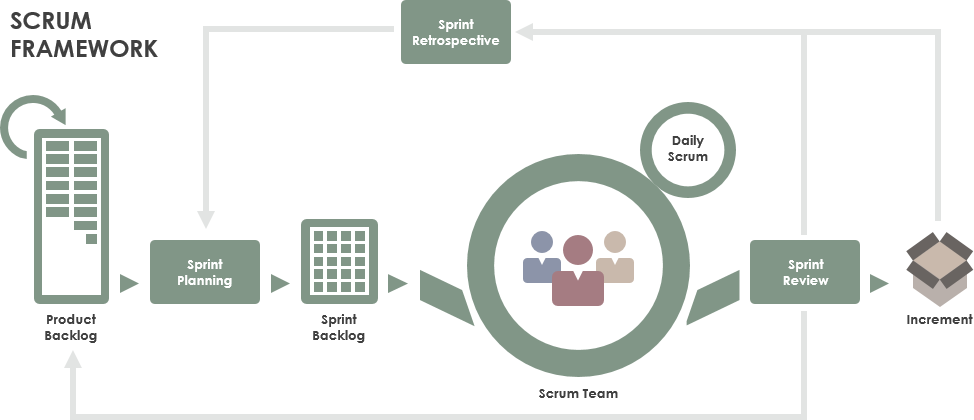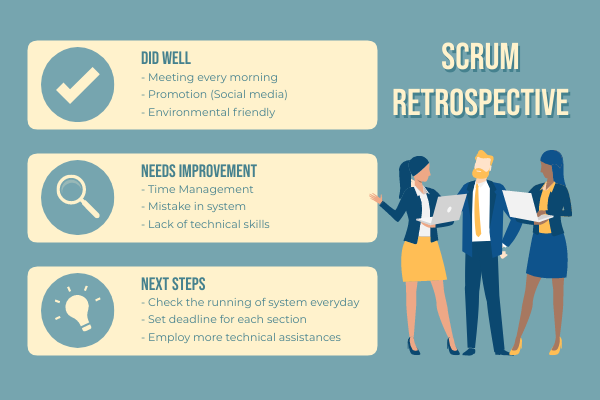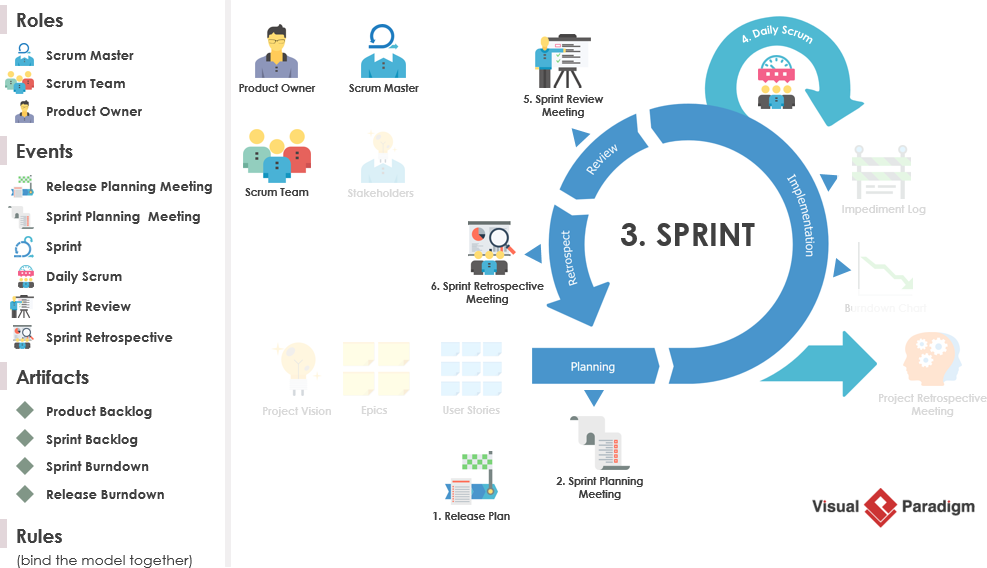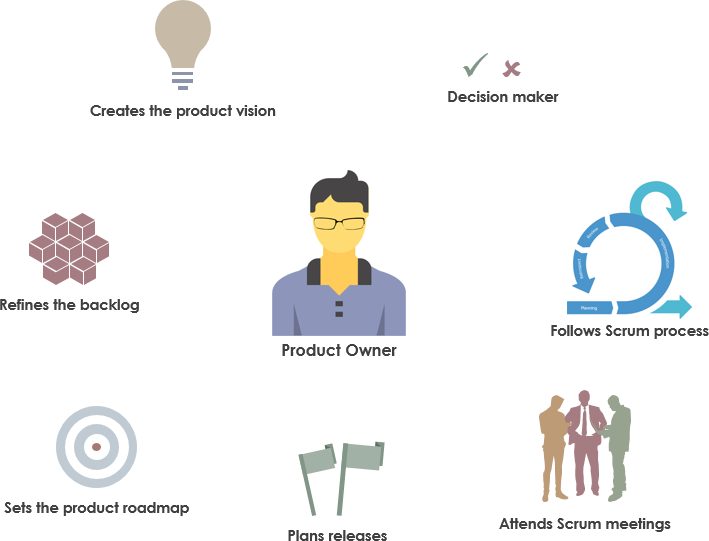The Scrum Master is responsible for ensuring that everyone related to a project, whether chickens or pigs, follows the rules of Scrum.
Continue reading
Learning one new thing everyday


The Scrum Master is responsible for ensuring that everyone related to a project, whether chickens or pigs, follows the rules of Scrum.
Continue reading
Daily scrum meeting (called daily stand up meeting) is usually taken place every morning on each sprint, the time lasts approximately 15 minutes. In the scrum agile practice, the team will typically hold a meeting on time at 9:00 in the same place.
Continue reading
The objective of the day-to-day work of a sprint is to create shippable product increment for the product in a form that can be delivered to a customer or user. Within the context of a single sprint, a product increment or shippable increment means that a work product has been developed, integrated, tested, and documented according to the project definition of done and is deemed ready to release.
Continue reading
The Sprint Retrospective occurs after the Sprint Review and prior to the next Sprint Planning. This is at most a three-hour meeting for one-month Sprints. The retrospective session is basically an “improvement” meeting held to find ways and means to identify potential pitfalls, past mistakes, and seek out new ways to avoid those mistakes, which are attended by all — the product owner, scrum master, development team members, and optionally with the stakeholders.
Continue reading
Although often treated as distinct methodologies, both Agile and Lean are rooted in similar values. These methodologies continue to evolve as they expand into new industries, applications, and opportunities, and many organizations have had amazing success in drawing on elements of both. Using Lean’s systems thinking and continuous improvement approach, agile development practices can be used to help organizations build healthy, innovative organizations that can sustainably deliver customer value.
Continue reading
Scrum itself is a simple framework for effective team collaboration on complex products. The Scrum Guide to explain scrum clearly and concisely. this guide contains a definition of scrum. This definition consists of Scrum’s roles, events, artifacts, and the rules that tie them together. Each component within the framework serves a specific purpose and is essential to Scrum’s success and usage. The rules of Scrum bind together the roles, events, and artifacts, governing the relationships and interaction
Continue reading
A Scrum master is a member of a Scrum team. Their task is to create a productive work environment and guide others to understand the values, principles, and practices of Scrum. scrum directors tend to be people-oriented, have a high EQ, and find joy in helping their team members grow.
Continue reading
A Product Owner who owns the product on behalf of the company is a part of a Scrum team. However, a product owner has no authority over other members of the team, same as the Scrum Master. A Product Owner is responsible for looking after a product for an extended period of time and is accountable for achieving product success. As the product owner, you should directly interact with the customers and users, the development team, and other key stakeholders, as the picture below shows.
Continue reading
A Sprint Review is more than just a demo; it is a review of the completed Sprint, the Product Backlog, and the Marketplace. Admittedly, demos are an important part of the Sprint Review. The purpose of the Sprint Review meeting is for the team to show the customers and stakeholders the work they have accomplished over the sprint and compare it to the commitment given at the beginning of the sprint.
Continue reading
A Scrum development team has the autonomy to choose how best to accomplish their work, rather than being directed by others outside the team. Unlike traditional management principles, the self-organizing empowered teams are not directed and controlled from the top; rather they evolve from team members participating actively & collectively in all the Scrum practices and events.
Continue reading